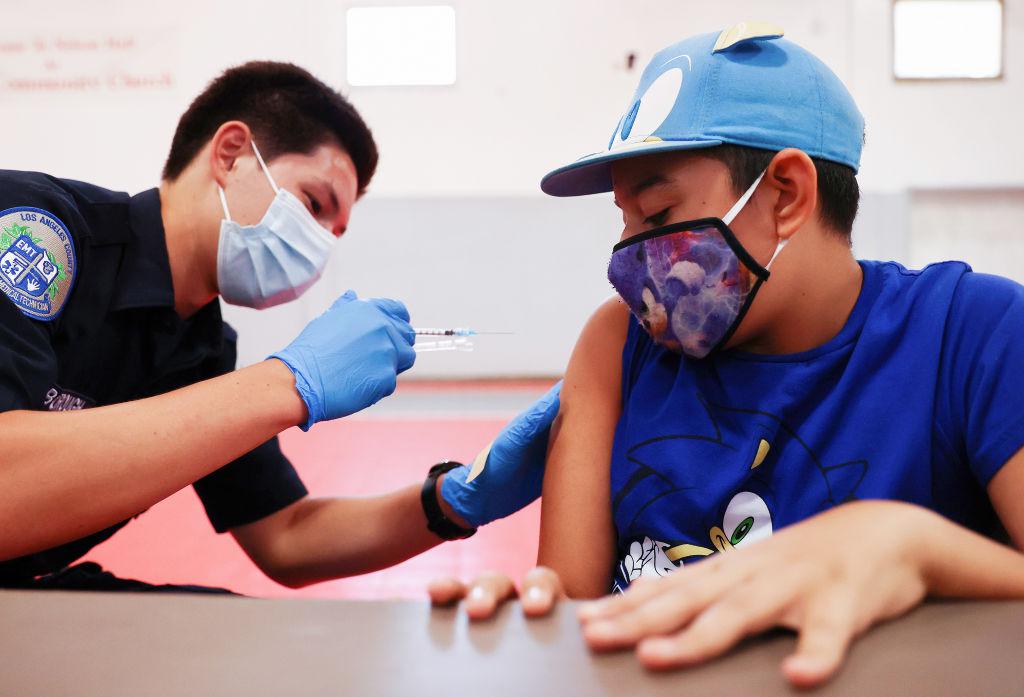The majority of children who die from COVID-19 are BIPOC, says CDC

More than 75% of fatal cases in kids are from marginalized communities.
The COVID-19 pandemic has been hitting communities of color harder for a variety of reasons—and that applies to children and teens as well. There were more than 390,000 cases of COVID-19 and 121 deaths in people under 21 years of age between February 12 and July 31, according to a new report from the Centers for Disease Control and Prevention.
Of those who died, 78% were children and teens of color: 45% were Hispanic, 29% were Black, and 4% were American Indian or Alaska Native. Gaps in America’s health care system and equality are factors, says the CDC.
Systemic racism and inequality are killing children in the United States.
Ten percent of those who died were aged under 1 year old, 20% were between 1 and 9 years old, and 70% were 10-20, with a disproportionate number of deaths among people of color aged 18-20 years old. The state of their health played a role as well: 75% of the 121 who died had an underlying medical condition.
This data shows that disparities among adults who die from the virus are persistent among younger people as well. In data updated in August, the CDC found that Black people die from COVID-19 at a rate 2.1 times higher than white, non-Hispanic people.
It also found that communities of color are significantly more likely to be hospitalized due to the virus: American Indian and Alaska Native people were hospitalized at a rate 5.3 times higher than white people; Black people at a rate 4.7 times higher, and Hispanic or Latino people at a rate 4.6 times higher.
The CDC wrote that there could be a few factors that contribute to the unequal impact: People of color are more likely to be essential workers who can’t work from home, which puts them and their families at a higher risk of exposure to COVID-19. “In addition, disparities in social determinants of health, such as crowded living conditions, food and housing insecurity, wealth and educational gaps, and racial discrimination, likely contribute to racial and ethnic disparities in COVID-19” outcomes, the CDC wrote.
Lastly, the disparities “are likely related to challenges in seeking care for various reasons, including difficulty and delays in accessing health care services because of lack of insurance, child care, transportation, or paid sick leave, and social determinants of health that contribute to higher prevalence of medical conditions,” the CDC wrote.
What’s the key cause of the disparities? The CDC named much of what contributes to them, but many experts say the driving factor behind those contributors (unequal access to health insurance, paid sick leave, and public transportation) is systemic racism.
“Hundreds of years of unjust and racist policies and practices in the United States continue to impact where people may live and work, the air they may breathe, the quality of their education and their access to healthcare,” four health scholars wrote for Smithsonian magazine in regards to the unequal impact of COVID-19. “All of this affects health and wellbeing.”
John Williams, chief of pediatric infectious diseases at UPMC Children’s Hospital of Pittsburgh, told The Washington Post, “This is the strongest evidence yet that there are deep racial disparities in children just like there are in adults.” He continued, “What that should mean for people is steps like wearing a mask are not just about protecting your family and yourself. It is about racial equity.”
The pandemic is more deadly for some children because of the inequality that predates it, and it is time to end that inequality. If you are concerned about these statistics, write to your reps and demand action from every politician courting your vote.


































